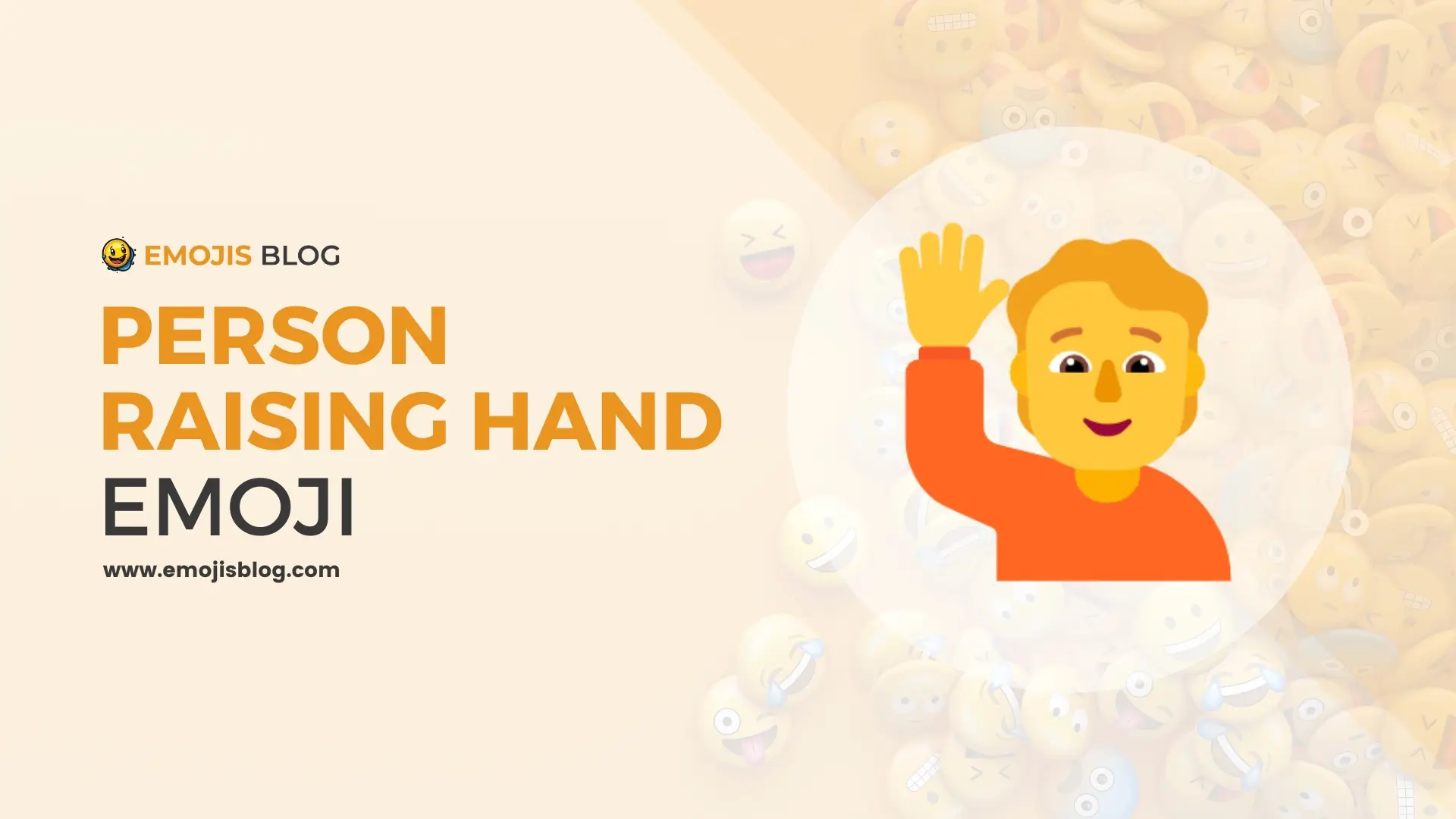What Does The Person Raising Hand Emoji Mean 🙋
🙋
Person Raising Hand Emoji Meanings 🙋
The person raising hand emoji 🙋 represents a person with one arm raised, signaling their desire to participate, volunteer, or attract attention. It is commonly used in educational and professional contexts to indicate someone wanting to speak or answer a question. In casual conversations, it can express enthusiasm, agreement, or identification with a statement. The emoji is available in various skin tones and gender variations, promoting inclusivity and representation. Its use enhances digital communication by adding a layer of non-verbal expression, helping convey emotions and intentions more vividly.
Technical Information
| Attribute | Details |
|---|---|
| Unicode Name | Person Raising Hand |
| Unicode Codepoint | U+1F64B |
| Unicode Version | 6.0 |
| Emoji Version | 1.0 |
| HTML Entity | 🙋 |
| Emoji Presentation | 🙋 |
| Text Representation | 🙋 |
| Shortcodes | :raising_hand: (generic), :raising_hand_woman: (female), :raising_hand_man: (male) |
| Variations | Gender variations (man, woman), skin tone variations |
| Introduced in Year | 2010 (Unicode 6.0), 2015 (Emoji 1.0) |
| Platforms Supported | iOS, Android, Windows, macOS, Linux, Web |
| Category | People & Body |
| Subcategory | Person Gesture |
| Common Uses | Participation, volunteering, seeking attention, expressing enthusiasm, agreement |
| Supported Skin Tones | Default (yellow), light, medium-light, medium, medium-dark, dark |
Understanding the Person Raising Hand Emoji 🙋
The person raising hand emoji 🙋 is a widely recognized symbol used in digital communication. Like other emojis, it transcends language barriers and adds emotional nuance to text. Let’s dive deeper into its meanings, usage, and the cultural significance it holds.
Origin and Design of the Person Raising Hand Emoji
The person raising hand emoji was approved as part of Unicode 6.0 in 2010 and added to Emoji 1.0 in 2015. It typically depicts a person with one arm raised, palm facing forward, indicating they are raising their hand. The default design shows a gender-neutral figure, but variations include female and male versions with diverse skin tones to promote inclusivity.
Meanings and Interpretations
1. Indicating Participation
The most straightforward interpretation of the person raising hand emoji is participation or volunteering. In educational and professional contexts, it signifies a person who wants to speak, ask a question, or offer an answer. This usage mirrors the real-world gesture of raising one’s hand in a classroom or meeting to get the floor.
2. Seeking Attention
Beyond formal settings, the emoji can denote someone trying to get attention in a conversation. It’s a polite way to indicate the desire to interject or contribute without interrupting others.
3. Expressing Excitement or Enthusiasm
The raised hand can also express excitement or enthusiasm about a topic. For instance, if someone mentions an upcoming event or an interesting activity, using this emoji can show eagerness or a strong interest in participating.
4. Identifying with a Statement
In social media or messaging apps, people often use this emoji to show they relate to or agree with a statement. It’s a way of saying “me too” or “I feel the same.”
Contextual Usage of the Person Raising Hand Emoji
The context in which the person raising hand emoji is used can significantly alter its meaning. Here are some common scenarios:
Educational Settings
- Example: “Who knows the answer to this question? 🙋”
- Interpretation: Someone is volunteering to answer the question.
Social Media and Casual Conversations
- Example: “Who loves pizza? 🙋”
- Interpretation: The person loves pizza and is enthusiastically responding to the question.
Professional or Formal Meetings
- Example: “We need a volunteer to lead this project. Any takers? 🙋”
- Interpretation: Someone is volunteering to take on the project.
Cultural Significance
Inclusivity and Representation
The availability of diverse skin tones and gender variations for this emoji highlights the importance of representation and inclusivity in digital communication. It allows users from different backgrounds to feel seen and acknowledged.
Non-Verbal Communication
Emojis like the person raising hand play a crucial role in non-verbal communication, especially in text-based environments where tone and body language are absent. They help convey emotions, intentions, and reactions more vividly.
Evolution and Future of the Person Raising Hand Emoji
As digital communication continues to evolve, so does the use of emojis. The person raising hand emoji might see further adaptations to include more specific cultural or contextual variations. It underscores the dynamic nature of language and how digital symbols keep pace with societal changes.
Conclusion
The person raising hand emoji 🙋 is a versatile and expressive tool in digital communication. Whether indicating participation, seeking attention, expressing enthusiasm, or identifying with a statement, it serves multiple purposes. Its design and variations promote inclusivity, making it a valuable asset in conveying nuanced emotions and actions in text-based interactions. As our communication methods evolve, so will the ways we use and interpret emojis like the person raising hand.

